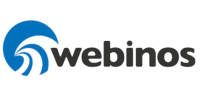Host
W3C gratefully acknowledges Intel Open Source Technology Center for hosting this workshop.

Sponsors


If you're interested in being a sponsor for a future workshop, please contact J. Alan Bird at abird@w3.org or +1 617 253 7823. For additional information, please visit the Sponsorship program.
Important Dates
12 October 2012:
Deadline for Position Papers
(EasyChair submission link)
26 October 2012:
Acceptance notification and registration instructions sent.
Program and position papers posted on the workshop website.
7 November 2012:
Deadline for registration
(invitation required, no participation fee)
14 November 2012, 9 AM
Workshop begins
15 November 2012, 5 PM
Workshop ends
Partners
![]()

The workshop has received funding from the European Community's Seventh Framework Programme (FP7/2007-2013) under grant agreement n°257103 (webinos).
Update: As follow-up to this workshop, on 21 February 2013 W3C launched the Automotive and Web Platform Business Group.
People today enjoy applications and services from multiple networked devices: notebook and desktop computers, smart phones, tablets, and Internet TVs. With our increasingly mobile lifestyles, it’s time to include the connected car in this mix. The Web is the ideal platform to offer a rich range of benefits and value-added services to drivers and passengers.
W3C’s Open Web Platform (OWP) is driving this and other industry transformations. The promise of the early information superhighway is being fulfilled. Whether tethering a driver’s smartphone or tablet to work with a car--or embedding technology into the car itself--there’s no need to reinvent the wheel. The Web can take you there.
Participants in this workshop had the opportunity to share their own perspectives, requirements, and ideas to ensure that emerging global technology standards meet the needs of the Web and Automotive industries.
The workshop has now taken place. See the Workshop summary, agenda & minutes, and position papers.
Top 5 Topics for Consideration
Putting safety first: Let's leverage the Web to
help drivers increase their attention and improve concentration
while on the road. What new ideas are there to suppress distractions
or to reinvent driver interfaces and controls?
Relationship between the car and the mobile phone: What is the role of mobile devices docked with the car for running applications? For example, are there ways to handle popular mobile applications that weren't designed for the car? Can APIs for interfacing with the car be designed to be independent of where the apps are running (e.g. in the head unit or mobile phone)? How would the car then authenticate apps running in the phone?
Creating markets for automotive applications: What are the business opportunities for automotive applications and the challenges facing automakers choosing to deploy their own app stores? How would automakers access and retain control over apps running on docked mobile devices, if the apps are obtained from mobile app stores? How do Web technologies facilitate apps stores? What are requirements and solutions for Web-based payments?
Improving quality and reducing costs through Web technologies: Why the Web? For developers, the Web reduces their application porting costs compared to developing for native technologies. It also helps developers focus their efforts, so they spend less time learning multiple technologies and more time creating the best possible user experiences. Automakers also benefit by improving quality and reducing costs through access to a much larger pool of talented developers.
Unique opportunities for the automotive user experience:
Think about all the things drivers constantly must pay attention to
and process: direction and lane changes, speed, acceleration or
deceleration, stops, potential hazards or obstacles, glare, road
conditions, location, as well as external signs and broadcasts
bombarding them with additional messages. Can we find ways to use
spatial audio, heads-up displays and new I/O devices (like touch
sensitive screens, physical controls and speech recognition) that
can improve the experience for these road warriors?
![[Web and Automotive] Shift Into High Gear on the Web; W3C Workshop; 14-15 November 2012, Rome, Italy](webauto-banner1.jpg)